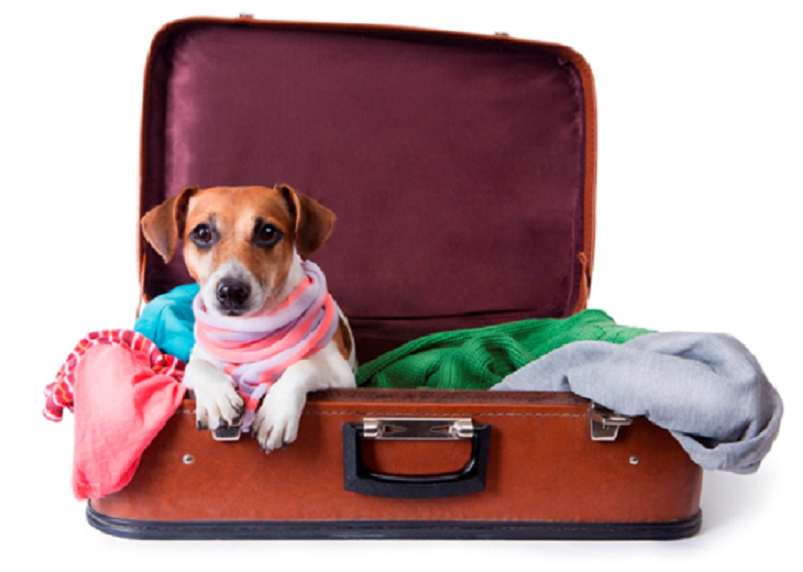
Traveling with Pets: What are the Difficulties?
What Does it Take to Travel with a Pet?
If a trip without your four-legged or feathered friend brings you no joy or you have no one to leave it with, you need to be ready for some additional expenses. Aside from documents, vaccinations, and nutrition, you should also think through your route. Why? Because some means of transportation are hardly or not at all suitable for travelers with pets.
If you are going to bring your pet with you for a short weekend trip or plan to be abroad for an extended period, we advise you to give our recommendations some serious consideration. And if you’re a student, you’ll need to tie up a few loose ends, so you don’t end up scratching the back of your head and asking yourself, ‘Who can do my college paper online?”.
Is Your Pet in a Position to Travel?

First of all, you need to make sure that your pet can endure long-haul travel. If your little friend is too young/old or has some serious illness, you should leave it at home with someone from your family. Please, note that traveling by air can be dangerous for pugs, bulldogs, and Persian cats that can suffer from oxygen deficiency and high temperature. If you are in doubt whether you should take your pet with you, you’d better consult with your veterinarian.
Preparations for your trip require some time. You have to collect all the necessary papers and get your pet ready for the upcoming journey. When it comes to transporting exotic animals, things get even more complicated. Under the CITES rules, you’ll need to obtain a special permit for taking a turtle, monkey, chinchilla or other fancy creatures out of the country. You should also prove that you have acquired your animal legally.
Documents, Vaccination, and Chipping
Another essential point directly related to your trip is collecting documents and having your pet vaccinated. About a month and a half before your journey, you’ll need to visit a veterinary clinic where your animal will be injected, chipped, and issued with a passport. Pets should be vaccinated no earlier than twelve months and no later than one month before a trip. Some countries may require you to get your animal vaccinated against endemic diseases. Also, your four-legged friend must be treated for parasites a few days before the travel.
You’ll have to apply for a certificate allowing you to take the animal abroad three days before the trip. Please, bear in mind that this document is valid only for three days during which a pet can be brought out of a country. Based on all documents collected in advance, you’ll need to obtain an international veterinary certificate at the airport.
How to Prepare Yourself and Your Pet for a Trip?
Be sure to bring along a medical kit for the animal you’re going to be traveling with. While choosing it, consider its age and health status. If it has some chronic diseases, you should take with you medications recommended by your veterinarian. When getting ready for a journey, you should find out the exact location of veterinary clinics in a town/city you’ll be visiting. Also, you should take a small supply of food for your pet in case it is not available there.

Consider purchasing a cage matching your pet’s size. Some airlines may not allow you on board a plane if the animal’s cage is too cramped. Registering animals at the airport usually takes a lot of time, so you should arrive no later than three hours before departure.
If you travel with a dog for more than twelve hours, you should take it out for a walk. Dogs should not drink water at least four hours before a trip. Giving a pet sleeping pills or tranquilizers is not a good idea because the effect can be unpredictable. It is a good idea to make sure you get a pet insurance before your trip. There are many affordable options, like Bivvy pet insurance, that will keep your pet safe and healthy.
Cats should be transported in special containers, wicker baskets or bags. Remember – kittens enjoy traveling in soft bags slung over your shoulder. Birds’d better be carried around in cages with three solid walls. Their interior should be padded to prevent its occupant from experiencing stress or getting a trauma. If the bird is big enough, you can transport it in a container for cats.
Learn the Legal Aspects of Traveling with Pets
It would be useful to find out the rules for bringing animals into the country of your destination. For instance, you’ll not be allowed to bring in parrots, pigeons, and chickens to Saudi Arabia, while French customs regulations will prevent you from entering the country with animals that are less than three months old. In some cases, going with pets may result in them spending up to four months in quarantine, as it is the case in the UK.
Your pet must be chipped to be able to enter an EU country. Also, it must have a passport and veterinary certificate. Malta, Ireland, and Finland have additional rules for animals requiring them to undergo treatment for parasitic worms no later than twenty-four hours before being brought in. Ireland permits transportation of animals only as cargo. Birds of all kinds are forbidden to be brought into Uruguay.
The easiest thing to do would be to call the consulate of the country you’re planning on visiting. Its staff members will always be happy to provide you with information about the rules for transporting animals.
Other Ways of Transporting Animals
If you’re traveling by plane, you should visit the airline’s website and find out its rules for transporting animals. Before getting on board, you have to pay a fee which amount depends on the weight of your pet and the size of the container it’s being transported in.
The only exception is made for guide dogs which can follow their owners for free.

Animals weighing up to five or eight kilograms can be brought in in a container. Pets weighing from eight to fifty kilograms are to be transported in a heated baggage compartment. If the airline has a place designated for small dogs, a passenger sitting next to you will not be allowed to bring in a cat.
Traveling with pets by train is more comfortable. Animals can go in the same compartment with their owners, providing other passengers do not mind. Otherwise, the passenger will need to pay for the entire compartment and purchase a separate ticket for the animal. Small pets can be transported as hand baggage. If you have a dog, you should remember to put a muzzle on it and leash it.
If you’re traveling by car, you should not allow your pet to move freely inside. It is a much better idea to fasten your dog with a special belt, and if it’s a cat, you should place it in a cage or container. Secure it so that it does not fall over and cause its occupant to get hurt. Cages with small animals, such as hamsters, rabbits or birds, are better be held in hands or fastened to the seat.
Keep Your Pet’s Comfort in Mind
Make sure that your pet feels as comfortable as possible during your trip. Remember – you should only take it with you if you are able to give it enough attention. The thing is, pets are not allowed in every place. Chances are you may have to leave it waiting for you in an unfamiliar setting, which can be a very traumatizing experience for it. In some countries, animals are not allowed on the beaches, except for designated areas. Also, the breed of your animal is very important. For example, if your cat is fluffy, it may suffer from heat in tropical countries.
When booking a hotel room, find out if you’re allowed to keep a pet in. Often, hotels permit you to do that; the only exception is made for animals weighing more than five kilograms. Learn whether the hotel provides special amenities, such as dog walker roots or parks. Find out whether there are any rules for taking pets out for walks (e.g., the compulsory use of a muzzle, a leash, and so on).
So, now you know what traveling with pets involves. If you are still determined to go on a trip with your four-legged or feathered friend, you should be ready for some inconveniences. However, you shouldn’t panic and always keep your cool. After all, some animals can feel even better than their owners during a journey.




